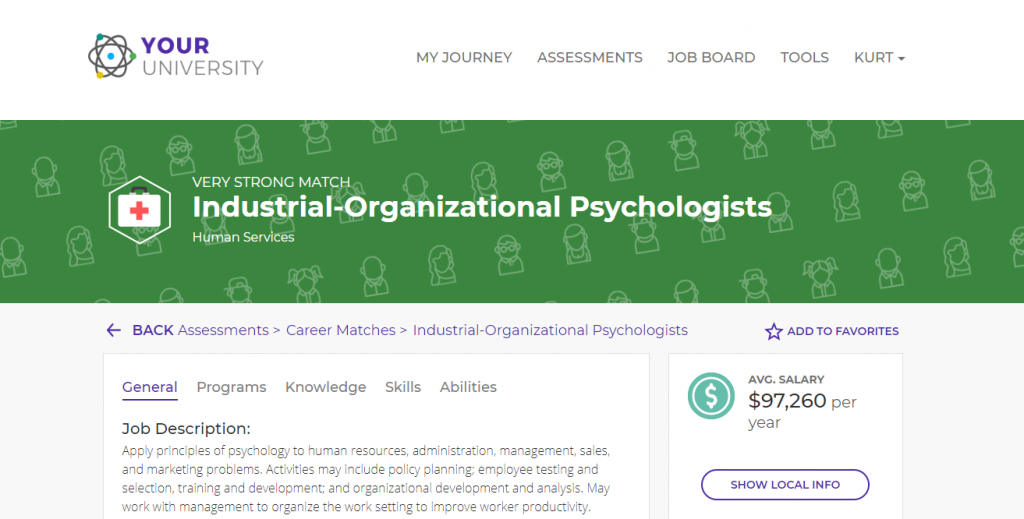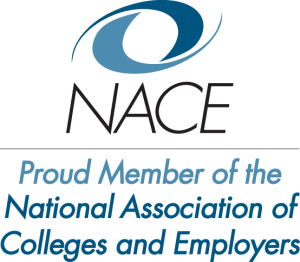Computer-Assisted Career Guidance Systems: Can You Discover Your Purpose Using a Computer?
How much do you know about computer-assisted career guidance systems? Talking now to college students, I would tell them “If I can do it, so can you!” Registering for my first term in college (in 1975!), I thought that college course numbers were arbitrary, so I didn’t think twice about registering for a 5000-level psychology course (which in fact was for seniors and graduate students). In addition to a textbook, we had to read books by Sigmund Freud, Carl Jung, and Abraham Maslow. (Boy, I thought, college is tough!).
Reality Check
If you know anything about Freud, you realize he had a pretty pessimistic view of human nature, and that depressed me. But Maslow, a humanist, was persuasively optimistic. As I read him, one passage spoke to me: All people were born with the potential for greatness, but everyday life places obstacles, distracts us, and lowers our self-esteem. It is the role of psychology to help us back on the path to self-actualization.
Coincidentally, I was having my own 18-year-old existential crisis. Who was I? Why was I in college? What was my purpose? Maslow’s words spoke to me in the middle of the night and I resolved I would be a psychologist. That worked out pretty well, but I now think about how lucky I was to make a good career decision without guidance. Without really understanding my passion and values. Without even knowing what psychologists do! No career counselor was on duty at 3:00 AM. In 1975, calculators were just being introduced, so there was no opportunity for an online reality check.
What Direction Are We Headed?
Flash forward. Sir Oliver Wendell Holmes once said: “I find that the great thing in this world is not so much where we stand as in what direction we are moving.” Futurist Seth Matthison suggested that if you want to see what direction we are heading, look at what teens are doing today. They are the early adopters. And if you look at a teen today, what do you see? They are likely looking at their phones.
Are Computer-Assisted Career Guidance Systems Trending?
Computer-assisted career guidance systems are not new, having existed in different forms as early as the 1960s. However, they are becoming more common as career guidance consumers become more comfortable with receiving advice from online sources. And, as they are more likely to expect access to services anytime and anywhere. Interestingly, the Department of Labor forecasts a bright outlook for Guidance Counselors, but it is also clear that virtual career guidance – without direct human guidance – is also increasing in popularity.
What Are Computer-Assisted Career Guidance Systems?
What are computer-assisted career guidance systems (or CACGs for short)? We define them as technology-based, interactive, individually-operated platforms that promote career exploration and choice. Well-developed computer-assisted career guidance systems have three components: a career assessment tool (with automated scoring), career-related information, and some form of decision-making guidance.
These decisions include: “what should I be when I grow up?” “what is the long-term labor forecast for that job?” and “what training do I need to get there?” For example, if 1975 Kurt could time travel to today, he would have the ability to log into a scientifically-developed, user-friendly CAG (e.g., PathwayU or Focus 2), and after taking some career assessments, confirm that he, in fact, was a very strong match to an Industrial-Organizational Psychologist. At that could make all the difference during that 3:00 AM existential crisis.

How Do You Implement CACGs?
Ideally, computer-assisted career guidance systems supplement the work of a professional career counselor. Students and job seekers can complete assessments and explore careers before meeting with a professional. (To be forewarned is to be forearmed.) CACGs can also be used for take-home assignments between guidance sessions. For example, a client can be asked to use the CACGs to collect and evaluate occupational information for two different professions. But, it’s also important to realize that not everyone has access to professional guidance. Additionally, individuals who are confused or undecided might prefer to start the career seeking process by “talking to a computer.”
So, can you discover your purpose using a computer? We believe you can. CACGs offer a viable supplement and alternative to face-to-face career guidance. And, pursuing purpose comes from finding fit – fit between what you find interesting and meaningful, and what a vocation or career path can provide. CACGs represent a viable method for many people to learn what drives them, and to explore career choices that can fulfill them.
-1.png?width=288&height=67&name=PathwayU_PGLogo%20(1)-1.png)



